The 38th China Internet Network Development Report released by China Internet Network Information Center (CNNIC) shows that as of 2016, the number of Internet users in China reached 710 million, and the network penetration rate reached 51.7%, with a 3.1% advantage. More than the global average. Thanks to the continuous development and improvement of the mobile communication network environment and the large-scale popularization of smart phones, mobile Internet applications have gradually penetrated into the various needs of users, thus further increasing the frequency of mobile Internet access [1]. On the one hand, users repeatedly apply for hot content in a short period of time, resulting in a large amount of redundancy. On the other hand, wireless resources are increasingly scarce, and base station load pressure is increasing.
In order to solve the above capacity bottleneck problem, D2D (Device-to-Device) communication technology has received wide attention as a new potential method [2-3]. Different from the traditional Cell User Equipment (CUE), which relies heavily on the base station for data transmission and control, the D2D technology allows the user to rely solely on the base station for processing control information, while the data passes through the D2D User Equipment (DUE). ) Directly connected for transmission without going through the base station. As shown in FIG. 1, the D2D packet forwarding technology refers to using a D2D user's mobile device as a distributed storage system. First, when all D2D users are grouped, users can obtain hotspot content through a conventional cellular link to form a distributed storage system. When other users in the group just need to apply for the content, they do not need to repeat through the base station. Application, but through D2D direct connection for content sharing, thus forming a multicast-based data sharing D2D group, can greatly improve the spectrum utilization [4].
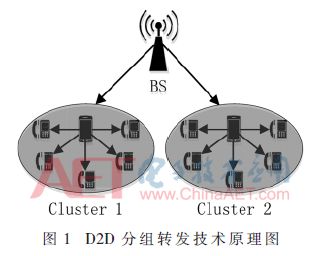
The traditional D2D communication does not consider the social background of the communication parties, resulting in poor security and low communication efficiency in the D2D communication process. By introducing the concept of social attributes, this phenomenon can be greatly improved. The main challenges in D2D communication are described in [5], and the use of social attributes to improve the performance of D2D is proposed. But this article does not show how to specifically apply social networks to D2D communication. Based on the grouping method in [5], the literature [6] further defines the concept of communication requirements and elaborates a set of social-aware resource allocation schemes. Literature [7] and [8] respectively use the grouping concept in [5] to divide users into several large groups for local services and multicast services. Literature [9] proposes a mechanism to use the concentration to assist D2D pair matching. Literature [10] introduces a composite grouping approach by combining actual geographic factors with social information. Literature [11] proposes a social cognition scheme for optimizing D2D communication through two levels (offline social layer and online social layer). Literature [12] proposed an innovative traffic download structure model based on social networks, which effectively improved the user's traffic download capacity.
Although the above research has added considerations for social attributes, it does not propose an efficient D2D packet forwarding strategy for real-time changes in user status. Considering that users often have strong mobility in actual scenarios, this paper proposes a use. D2D packet forwarding policy for social attributes. The strategy utilizes the Chinese Restaurant Process (CRP) algorithm and combines social attributes including social relationships, interest similarity and concentration to provide a feasible solution for D2D packet forwarding under high mobility. Finally, simulations show that the algorithm can improve the security of data transmission, improve spectrum utilization, and alleviate the pressure caused by repeated downloading of redundant content by base stations.
1 system model
This article considers a classic single-cell ultra-dense network scenario where there are a large number of UEs (such as campus and office) within a single cell. Users can not only obtain data from base stations through traditional cellular links, but also from neighboring users through D2D links. Considering that the specific location of mobile users is changing in real time, this paper uses dynamic CRP algorithm to allocate users and allocate resources.
The CRP algorithm assigns each newly arrived D2D user into an existing group or independently into groups by simulating the process of selecting a table to share with a person or a separate table when the guest arrives at the restaurant. The first arriving users are independently grouped. When the user n arrives, the preceding users have been divided into K groups, and the existing D2D groups can be represented by ξ={c1, c2, c3, ..., ck}. The social relationship between users is represented by an upper triangular matrix D. The optional values ​​of non-zero elements in D are q1, q2, and q3, indicating the intimacy of three different social relationships, which are strangers, friends, and family members. The user's hobbies are represented by an array of 5 elements, which can take a value of 0 or 1, respectively, to indicate whether the user has this hobby. The connection time is represented by another upper triangular matrix F, by which the connection frequency or concentration of the two users can be obtained. As shown in FIG. 2, the probability Pi(n) of the user joining the group ci can be calculated by the social attribute, and the group ci or the independent group is randomly added according to the probability. Then, according to the calculated packet activity, a suitable cellular user is selected for resource multiplexing, and a group with high activity is allocated to a cellular user having more resources.
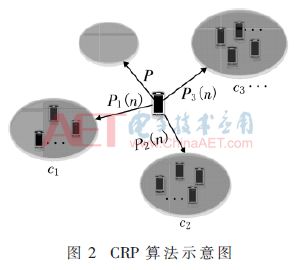
2 Strategy for packet forwarding using social attributes in D2D communication
Literature [5] proposes four main social network attributes that may be applied to D2D communication, including social relationships, social groups, concentration, bridging attributes, etc. This paper focuses on social relationships, social groups and concentration. concept.
2.1 Social Relationship
Social relationships represent the degree of intimacy between users. Usually users tend to share private information in their devices with friends or family, and they are conservative to strangers. Therefore, based on the concept of social trust, this paper introduces the concept of social distance between users to improve D2D forwarding mechanism. Security. Based on the literature [10], the concept of introducing social distance is:

Where p(n,l)∈[0,1] is the social trust between user n and user l, and the greater the social trust degree p(n,l) between the two users, the shorter the social distance.
2.2 Social groups
Social groups represent the similarity of interests between users. Just as in the same old saying, “things are grouped together, people are divided into groupsâ€, users with similar interests and interests may have files that other users need, by grouping people with common interests, when users apply for the file, File transfers can be made directly through the D2D within the group without having to repeat the download through the base station. Therefore, based on the literature [13], the concept of weighted cosine interest similarity is introduced to measure the similarities and differences between two users:
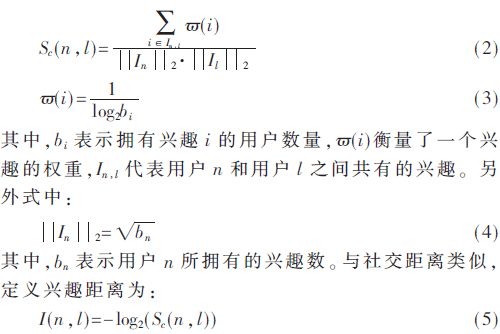
2.3 Concentration
The definition of concentration is the sum of the number of times the shortest path between any two nodes passes the current node in the connected graph. In this paper, the degree of concentration represents which users tend to communicate with other users more frequently, and the higher the degree of concentration, the higher the communication frequency. Here, this article defines the concept of a connection interval:

Since a group with a high θc may perform multiple D2D communication at the same time, in order to ensure communication quality, a cellular user having more resource blocks will be allocated to the group to avoid congestion at the peak period, while improving spectrum efficiency and improving QoS.
2.4 Using S-CRP algorithm to group users and allocate resources
In this paper, social attributes are added to the proposed CRP algorithm, which is distinguished from the traditional CRP algorithm. Hereinafter, it is called S-CRP algorithm, which is the social-aware CRP algorithm. According to formula (1) and formula (5), the probability that user n selects user l as a D2D communication partner is:
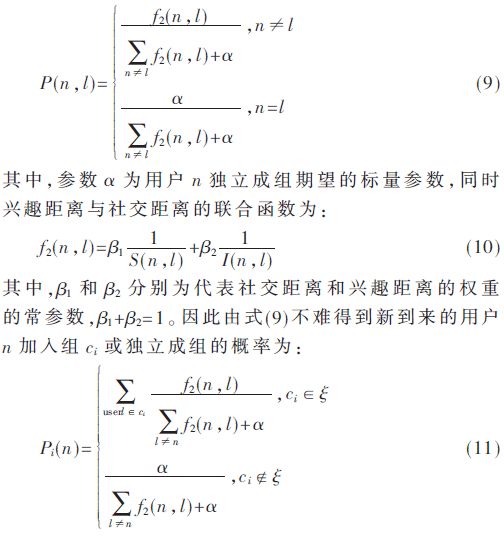
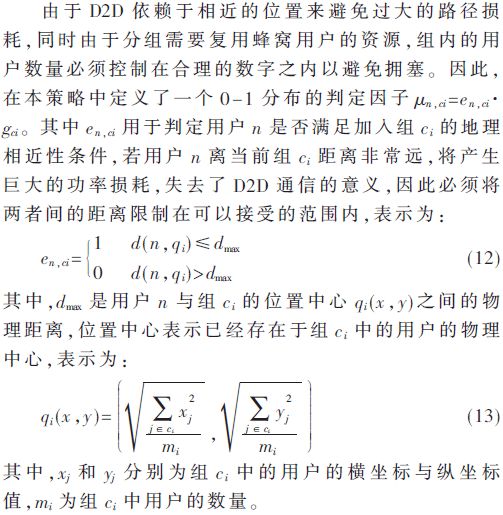
In addition to the need to meet geographical proximity conditions, it is also necessary to consider whether the number of users in the group ci has reached the upper limit. If the upper limit has been reached, the newly arrived user n cannot be received, so the definition of gci is:

Obviously, when μn, ci is 1, it means that user n satisfies the condition of joining group ci, and can join group ci or independent group according to the probability in formula (11); otherwise, user n does not satisfy the condition of joining group ci The probability of joining the group ci is zero.
When the grouping is completed, the corresponding θc value can be calculated according to the formula (3), and the group of high θc values ​​tends to be connected at a high frequency, that is, it is possible to process multiple D2D connections at the same time, and thus is allocated to the cell having more resource blocks. Users reuse to ensure their performance.
In summary, the D2D packet forwarding policy flow using social attributes proposed in this paper is shown in Figure 3.
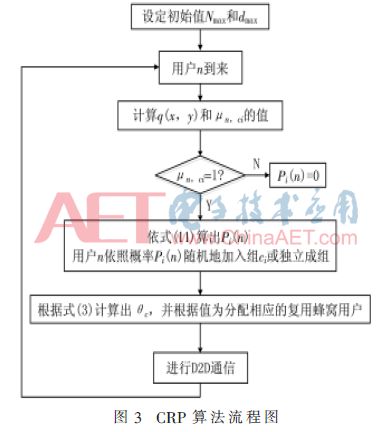
3 Simulation analysis
In order to verify the effectiveness of the forwarding strategy proposed in this paper, this paper uses MATLAB to compare the performance difference between the random algorithm, the traditional CRP algorithm and the proposed S-CRP algorithm in a single-cell scenario. There are two modes of D2D packet forwarding: full-duplex mode and half-duplex mode. When working in full-duplex mode, the group D2D receives and transmits data at the same time, which will cause serious self-interference. This simulation will work on this. Half-duplex mode. With a cell radius of 500 m, D2D users are evenly and randomly distributed within the cell. The large-scale path loss index between the D2D user and the BS is h=3.5, and between the D2D users is h=4. At the same time, the CRP parameters α=0.1, σ2=-90 dBm, BS power PB=0.2 mW, and D2D user transmission power PD=0.1 mW. Q1, q2, and q3 represent the intimacy of three different social relationships, which are strangers, friends, and loved ones, respectively, which are possible values ​​of p(n, l) in equation (1).
First, as shown in Figure 4, as the number of D2D users in the cell increases from 20 to 100, the data transmission rates of the three algorithms are significantly improved. The S-CRP algorithm proposed in this paper is particularly significant, and the number of users is the same. Under, S-CRP has a higher data transfer rate. At the same time, increasing the upper limit of the number of group users Nmax from 5 to 10 can further improve the overall data transmission rate of the two CRP algorithms. This is because as the number of D2D users in the cell increases, the proportion of users accessing data through D2D is increasing, so the data transmission capacity provided by the unit bandwidth is doubled, which greatly improves the spectrum efficiency. However, the S-CRP algorithm proposed in this paper considers the interest distance between users, and the number of users participating in D2D data acquisition is more, so the multiplication phenomenon is more obvious. At the same time, the increase in the number of group users Nmax allows more users to participate in D2D communication, and will also increase the data transmission rate.
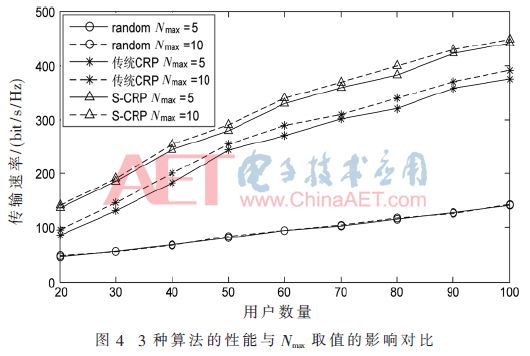
Second, the intra-group distance upper limit dmax also affects the transmission rate. As shown in Figure 5, with the increase of dmax, the data transmission rate of the random algorithm keeps decreasing, while the data transmission rate of the traditional CRP algorithm and S-CRP algorithm slowly declines after experiencing a rapid rise, and the S-CRP algorithm is generally better. Traditional CRP algorithm. This is because the traditional CRP and S-CRP algorithms increase the total transmission rate when the number of shared D2D users increases in the initial stage of dmax increase. However, as dmax continues to rise, the distance of D2D users communicates too far, which causes the channel quality to drop. The rate at which the group leader UE sends data becomes smaller. Although the number of users in the group is still increasing at this time, the total transmission rate is still declining. The S-CRP algorithm considers social attributes, and there are more concurrent multi-person D2D communication in the group, so the overall performance is better than the traditional CRP. However, the random algorithm cannot share the dividend of multi-person D2D data sharing, and the increase of dmax causes the data transmission rate to decrease, so the total transmission rate continues to decrease.
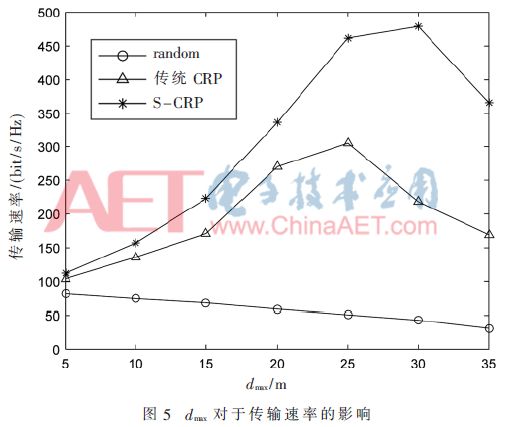
In addition to dmax and Nmax mentioned above, p(n,l) is also one of the factors affecting the overall performance. Figure 6 shows the number of channels required for different values ​​of q1, q2 and q3. As the number of users increases, the number of channels required increases as a whole. Under the same number of users, when q1, q2, and q3 take higher values, obviously fewer channels are required. This is because the number of users sharing through D2D forwarding is more in the case of high trust, so there is no need to frequently Repeatly request data from the BS.
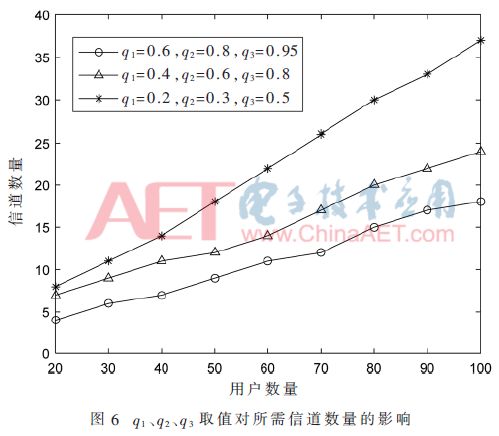
4 Conclusion
This paper proposes a D2D packet forwarding strategy that utilizes social attributes, which considers both D2D packet scheme, group leader UE selection and D2D resource allocation. Theoretical analysis and simulation results show that this strategy can improve spectrum efficiency and reduce base station load while considering security. At the same time, this also provides a new way to improve the performance of D2D communication by using social attributes.
Mini Box,Intel Celeron Processor Mini Pc,Customizable Pc,Mini Pc Desktop
C&Q Technology (Guangzhou) Co.,Ltd. , https://www.gzcqteq.com
